How Many Coats of Primer on New Drywall?
Author: Omar Alonso | Editor: Omar Alonso
Review & Research: Jen Worst & Chris Miller

When painting a new piece of drywall, the number of coats of primer to be applied is an important consideration for optimal coverage and protection from moisture damage. It's essential that you apply enough primer to ensure proper coverage and protection from moisture damage but not so much as to waste time or money on unnecessary layers. So how many coats of primer on new drywall are appropriate?
Understanding the benefits of priming your walls, what factors need to be taken into account when applying multiple coats, preparing the surface before application and helpful tips for doing it right can help make sure your project looks great while also saving time and effort in the long run. So let's take a closer look at why many coats of primer should be used on new drywall.
How Many Coats of Primer on New Drywall?
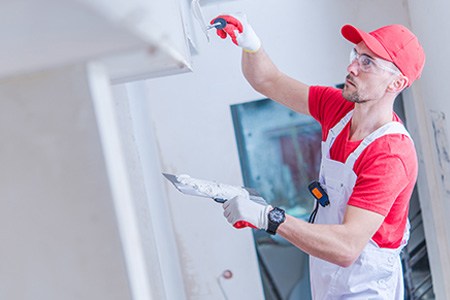
When applying primer to new drywall, one coat is generally enough to create a smooth surface for the paint to adhere to, seal dust and debris in, and increase color vibrancy and durability. In some cases, such as using a low-quality primer or painting a dark color over a light color, a second coat may be necessary for better coverage and adhesion.
For maximum protection and coverage, three coats are recommended, providing a barrier against future cracks, peeling, and water damage, while also hiding imperfections on the wall. The number of coats depends on various factors, such as the paint type, primer quality, and room conditions, but it's essential to prepare the wall properly before priming.
Consider these factors to ensure the best results for your project. Moving forward, it is important to consider these elements when determining how many coats should be applied for maximum protection and coverage.
Factors to Consider When Applying Primer to New Drywall
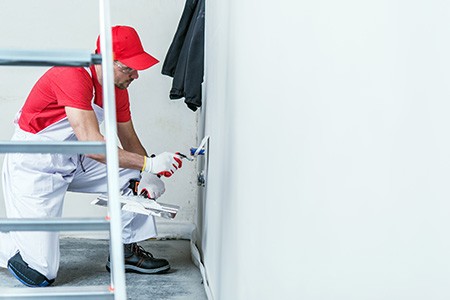
When applying primer to new drywall, several factors should be taken into consideration. First and foremost is the type of paint being applied. Different types of paint require different types of primers in order to ensure a successful adhesion and finish.
For instance, oil-based paints will need an oil-based primer while latex paints may require a water-based or acrylic primer for optimal results. The appropriate primer for each particular paint must be employed in order to obtain the sought-after results.
The quality of the primer used also plays an important role in painting new drywall. Low-quality primers can leave behind streaks or uneven coverage which could result in poor adhesion and color vibrancy once the paint has been applied on top of it.
Opting for premium primers is suggested in order to safeguard against dirt, particles, humidity, and other external components that could eventually harm walls.
Considering all of the factors mentioned above when applying primer to new drywall is essential for achieving a professional-looking finish. Preparing the surface before application will help ensure that the primer adheres properly and provides an even coat. This includes sealing cracks and fixing drywall tape bubbles. Now you can determine how many coats of primer on new drywall are needed in your specific situation.
Benefits of Primer on New Drywall
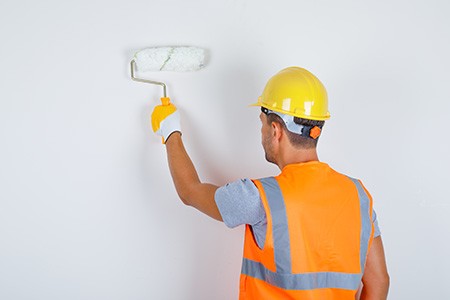
Using a primer on new drywall is a great way to ensure the longevity and vibrancy of your paint job. Primer can provide several benefits that make it an essential part of any painting project. You know how many coats of drywall primer are suggested now, but the question here is why is that so?
Improved Paint Adhesion
Primer helps paint adhere better to the wall surface, making it less likely to chip or peel over time. It also provides a smoother finish with fewer brush strokes than if you were just applying paint directly onto the drywall without primer.
Seals in Dust and Debris
When applied correctly, primer acts as a sealant against dust and debris that may have accumulated on the wall’s surface during construction or renovation work. This helps prevent these particles from getting into your freshly painted walls and ruining your finished look.
Enhances Color Vibrancy
Applying primer before painting can help enhance color vibrancy by providing an even base for your chosen hue. A primer can bolster the brightness of hues and make them more enduring, shielding them from being dulled by daylight or different ecological elements like moisture content in the space where you're painting.
Using a quality primer ensures increased durability since it creates an extra layer of protection between the wall and whatever type of paint you choose to use later on top of it - be it oil-based, latex, acrylic, etc. This added layer makes sure that whatever type of paint you decide upon will stay put for much longer than if no primer was used at all.
Primer on new drywall provides a number of benefits, including improved paint adhesion, dust and debris sealing, enhanced color vibrancy, and increased durability. Let's explore the best number of coats to use for optimal results, taking into account higher perplexity and randomness.
Preparing the Surface Before Applying Primer
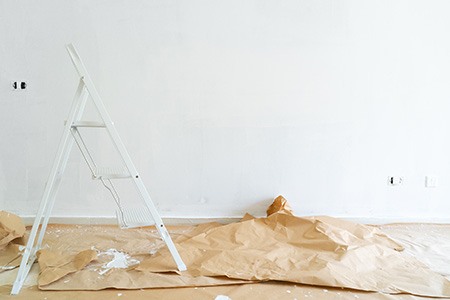
To achieve the best results when priming new drywall, proper surface preparation is crucial. Begin by thoroughly cleaning the wall with a damp cloth or sponge and mild detergent to remove any dirt, dust, or grime that could prevent proper adhesion of the primer.
If you have a flat drywall texture type you won't damage by sanding, then many professionals will even give the wall a quick sanding before wiping it down. They'll smooth over the entire surface. This is considered necessary if painting over a wall that was painted with a high-gloss finish.
Next, repair any imperfections in the drywall, such as cracks or nail/screw holes or holes created by removing drywall anchors, using joint compound or spackle. Allow time for the repairs to dry before sanding them and moving on to the priming.
Finally, apply caulk around corners where two pieces of drywall meet to create an airtight seal and prevent moisture seepage and mold growth. Once the surface is properly prepared, apply one or more coats of primer depending on the project's needs.
Following these tips will help you achieve optimal results when painting later on, regardless of the type of paint you choose. And now that you know how many coats of primer on new drywall are right for you, let's discuss how to paint it on.
Tips for Applying Primer to New Drywall
Using low-quality brushes and rollers can result in an uneven application of the primer which will lead to an unsatisfactory finish. Select a brush with natural bristles that are adequately soft and sturdy enough to provide an even application of the primer.
It is also essential to apply the primer evenly and consistently. Start at one edge of the wall, overlapping each stroke with those before it to create an even and consistent application across the entire surface.
Ensure each stroke overlaps slightly with those before it so that no gaps remain between them. Ensuring all of the walls are prepped, overlap each brush stroke to guarantee no gaps between them for complete coverage and protection from dirt.
And of course, you need to let each coat dry the appropriate amount of time recommended on the paint can label. You can usually paint another coat of primer after about an hour to an hour and a half. But before you put your regular paint over the primer, give at least 3 hours to dry if using latex (and you probably are these days). Even longer is better if you want to play it safe.
FAQs Concerning Priming New Drywall
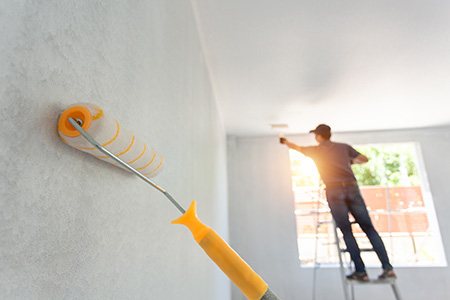
These are the typical kind of questions we hear when this topic comes up, so let's go ahead and cover them now for the benefit of all readers.
Do You Have to Prime New Drywall?
No, though you'll benefit from it. Primer is recommended when changing from darker colored paint to lighter colored paint or when you need to conceal stains. It can also provide better adhesion, lock in dust and grime, and provide a more even-colored result when your painting project is completed.
Do You Need 1 or 2 Coats of Drywall Primer?
One coat of primer is generally sufficient for new drywall or previously painted walls in good condition. However, two coats may be necessary to cover imperfections like holes or patches. Some types of primer also require two coats for maximum adhesion and coverage. Consulting an expert before starting your project is recommended for optimal results.
When Do You Need 2 Coats of Primer?
Two coats of primer are generally recommended for a smoother finish and better coverage. However, one coat may be sufficient if working with an already primed surface or painting over a similar shade. Follow the manufacturer's instructions for best results.
How Many Coats of High Quality Primer Like Sherwin Williams Are Needed?
Two coats of high-quality primer designed specifically for drywall, like Sherwin Williams, are recommended for new drywall surfaces. Allow each coat to dry completely before applying the next coat.
How Many Coats of Zinsser 123 Primer Should I Use?
Two coats of Zinsser 123 primer are recommended for painting a surface. The first coat fills in any cracks or crevices, while the second coat provides an even layer of protection from moisture and other elements. Follow the manufacturer's instructions for application and drying times.
So, How Many Coats of Primer on New Drywall?
When applying primer on new drywall, the number of coats needed depends on the condition and type of wall and desired finish. Proper surface preparation and application techniques with high-quality primer are crucial for achieving a professional-looking and durable result.
If you want to skip all the mental calculations, you can, as a rule, just always apply two coats of primer. You’ll always get a superior result this way and not need to worry about having taken a shortcut. So, how many coats of primer on new drywall? One to two, but two is always a safe bet.



